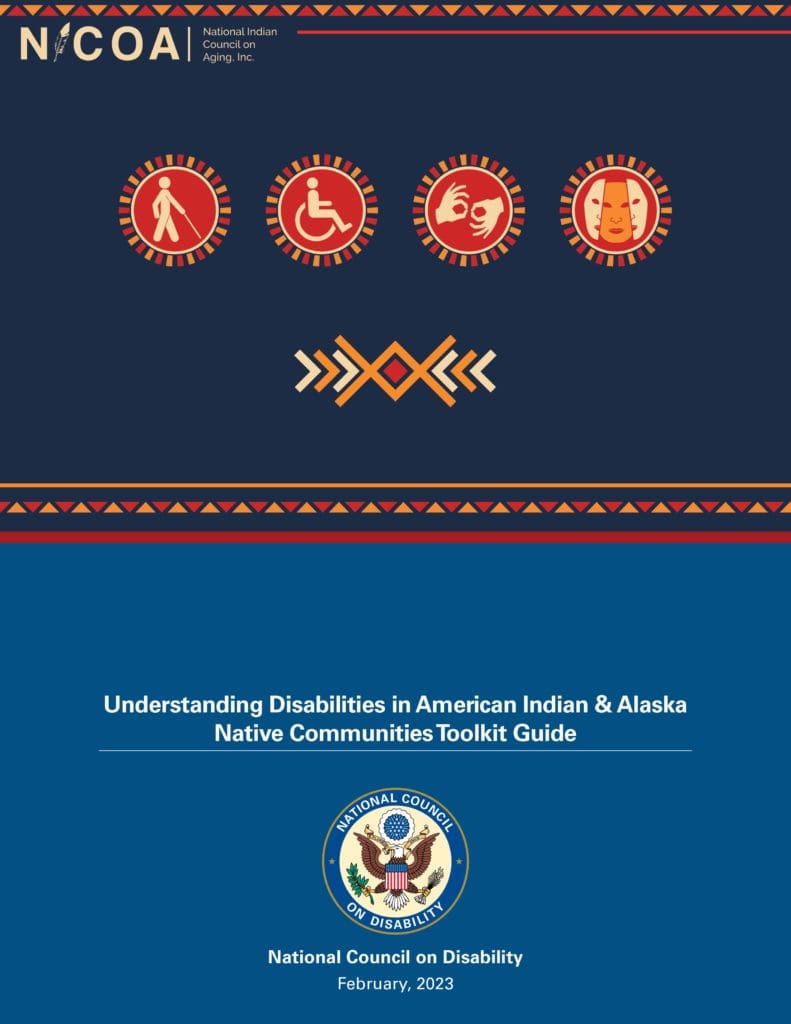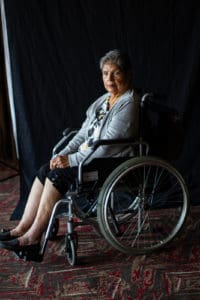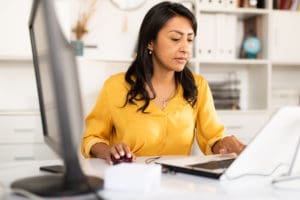The National Indian Council on Aging (NICOA) has released a toolkit dedicated to increasing awareness and knowledge of the needs of American Indian and Alaska Native persons living with disabilities. The toolkit — “Understanding Disabilities in American Indian & Alaska Native Communities” — contains information about disabilities, tribes and resources.
Gathering national technical experts, NICOA updated and expanded this valuable resource, first developed by the National Council on Disability in 2003, with the latest data and more recent resources. Thanks to funding from the Administration for Community Living / Administration on Aging, this wonderful new toolkit is now available to download.
The resource is divided into dedicated sections for healthy living, education, independent living, vocational rehabilitation and employment resources, assistive technology, housing and facilities, and transportation. You will find suggestions for improving services, providing protections, and utilizing resources in local tribal communities for people with disabilities. Additional information provides overviews on federal disabilities laws, initiatives, agencies, and organizations that support work with Native individuals with disabilities and communities.
The toolkit is of high quality in its description of the problems facing American Indian and Alaska Native students with disabilities. In the education section, the toolkit reviews individualized education programs (IEPs), outlines what each IEP should include, and provides tips for parents as they work with their child’s school to develop an IEP. The education section also lists organization contact information for supports and resources. While the other sections are not focused on educational issues, there are still valuable resources and contact information for anyone working with Native students with disabilities.
The most unique feature of this toolkit are the stories featuring people living with a disability. They reflect on their life, their relationship to the Native disability community, and how their disability has made life both more fulfilling and, at times, more challenging.
The trainings are focused on understanding the needs of American Indian and Alaska Native elders and best practices in Indian Country. Native elders and their communities can use these trainings to celebrate — through storytelling — the profound teachings of our elders.
The information within the toolkit addresses an urgent need of Native people today and has been formatted for easy accessibility. This resource has the potential to have a high impact on its target population through the dissemination of critical information to parents, community members, tribes, and schools.
This project is dedicated to building bridges between tribes and those in the Aging Network who want to help but are not sure how to begin. It is our hope that this guide assists tribes and their allies as they work together to make good decisions about our shared future.
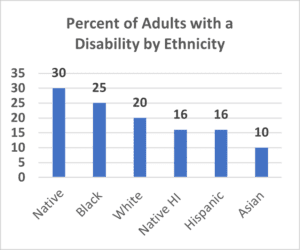 Who Is Living with A Disability?
Who Is Living with A Disability?
People with disabilities are the largest minority group (12.7 percent) in the United States and the only group any of us can become a member of at any time. In 2019, there were 41 million people with disabilities in the U.S.
Data from the Centers for Disease Control and Prevention in 2020 found that 30 percent, or one in three, American Indian or Alaska Native adults have a disability and that Native people overall are 50.3 percent more likely to have a disability when compared to the national average.
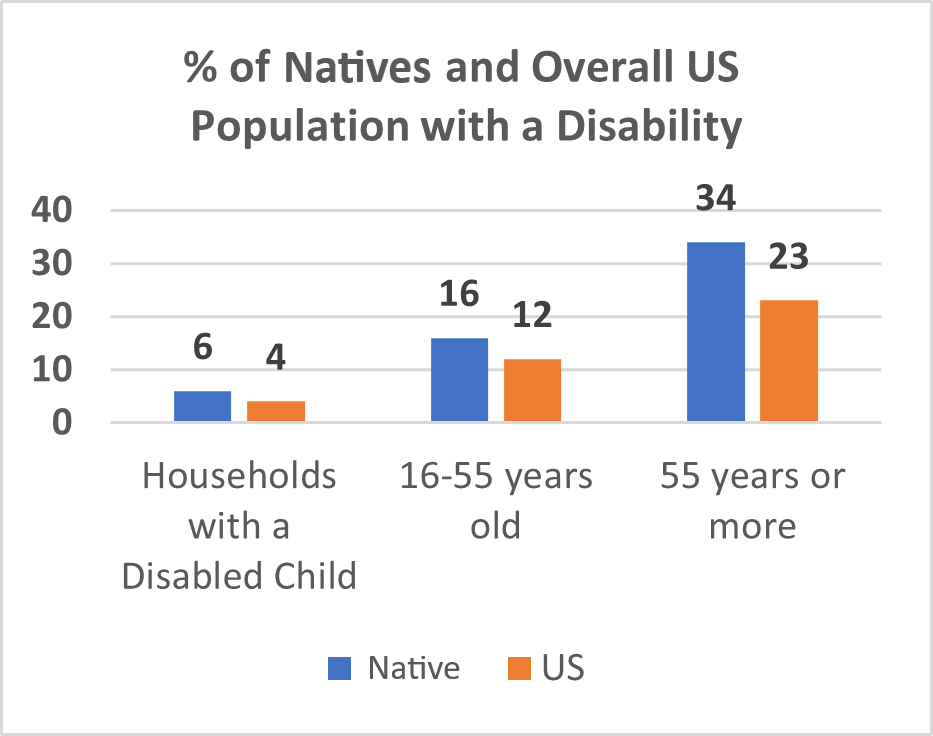 What Is a Disability?
What Is a Disability?
A disability is any condition of the body or mind (impairment) that makes it more difficult for the person with the condition to do certain activities (activity limitation) and interact with the world around them (participation restrictions). Disabilities can be visible or unnoticed by others. A disability can begin as a condition from birth or result later in life from injury or disease. The likelihood of living with a disability increases with age.
According to the CDC, disability has three dimensions:
- An impairment exists within a person’s body or mental functioning such as loss of a limb, vision, or memory.
- An activity limitation makes it difficult to perform a task such as seeing, hearing, walking, or problem solving.
- Participation restrictions impede a person’s involvement in life situations such as working, socializing, recreating, obtaining health care, and preventive services.
What Is Inclusion?
Inclusion means everyone can fully participate in society. Policies and practices are designed to identify and remove physical, communication, and attitudinal barriers. An inclusive society is one that is accessible and provides reasonable accommodations and assistive technology.
Accessibility means products, services, and facilities can be used by people of all abilities. For example, physical spaces are modified or designed with wheelchair ramps, power doors, curb cuts, talking streetlights, braille signage, etc. To facilitate communication, fire alarms are seen and heard; screen readers are available on electronic devices, and closed captioning is available on television, etc.
An inclusive attitude recognizes what a person can do rather than a person’s disabling condition. It is the belief that people with disabilities can do things and make their own decisions.
Reasonable accommodations are alterations to items, procedures, or systems that enable a person with a disability to use them to the maximum extent possible. For example, people with a visual impairment have alternative texts provided such as braille, large print, or audiobooks. People with a hearing impairment may have an American Sign Language interpreter or exchange written messages with someone. A student with a learning disability may have a test read aloud or a note taker provided.
Assistive technology (ATs) are devices, tools, or equipment that enhance functional independence and make daily living easier. ATs can be simple or complex. Button hooks or canes are simple tools. Smart (talking) canes or gaze interaction computers (navigated by a user’s eye control) are complex devices.
What Does Independent Living Mean for A Person with A Disability?
Independent living means that people with disabilities have a voice, choice, and control over their everyday lives. A person may not need any assistance and may live, work and travel without help. Others may need help with managing money, and day-to-day living skills like cleaning the house, cooking, shopping, using transportation, etc.
What Is Advocacy and Allyship?
Advocacy promotes the interests or causes of someone or a group of people. Self-advocacy is speaking up for yourself by expressing your interests, desires, needs, and rights. Individual advocacy, also called allyship, is having someone stand beside you (an ally) who speaks out for change on behalf of another person or group. Systems advocacy is done by individuals and/or organizations that work to change policies, laws, or rules that unfairly impact a group.
Care And Support for People with Disabilities
When caring for a person with a disability, it’s essential to have a greater understanding of what it is like for that person to live with a disability. Knowing the individual, their culture, values, and how they perceive their condition and abilities are equally important.
Conditions usually occur along a spectrum so that two people with the same impairment – loss of vision, for example – may have very different levels of function, and need varying levels of care and support, while others may have other co-occurring conditions, often called, “comorbidity.” Medical professionals, as well as family members and caregivers, should provide services and support to help people with disabilities maintain their dignity and independence.
Services and support should be person-centered care, which emphasizes listening and respecting the individual’s preferences, needs, and values. If a person’s condition is likely to progress or impact their ability to problem solve or communicate, advance care planning and directives can ensure that their wishes are in writing.
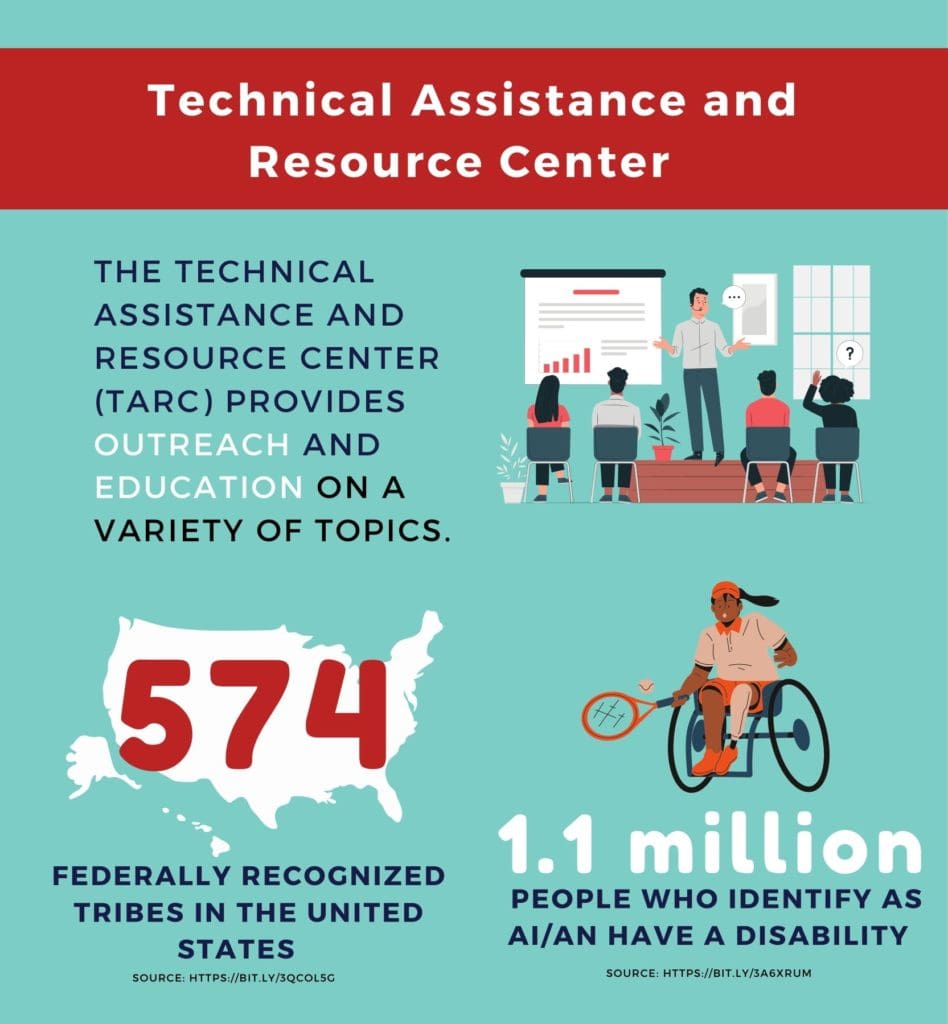 Disability In Indian Country
Disability In Indian Country
People with disabilities in Indian Country are often unserved or underserved. Tribal communities face numerous barriers, including lack of funding, employment opportunities, day programs for adults living with developmental disabilities, staff, transportation, coordination among agencies, consultation with tribes, cultural sensitivity by non-Native staff, and systems to identify people eligible for services.
To meet the needs of Native people living with developmental and/or acquired disabilities, there are four areas that can improve support and services:
- Prioritize home and community-based services that may offer culturally appropriate care for Native people with disabilities
- Listen to the voices of Native people receiving long-term care
- Provide trauma-informed care
- Consider the needs of family caregivers who provide a majority of long-term care in Indian Country
Native people living with disabilities deserve equal access, reasonable accommodations, and an opportunity to make powerful contributions to their society. Indian Country is known for making room for everybody. Take a look at your community and make it more accessible to our elders and others living with disabilities. Be an ally and advocate for making life easier for everyone.
Working with a Disability
Over 500,000 working-age American Indian or Alaska Native adults in the United States have at least one disability. Researchers at the U.S. Department of Labor’s Office of Disability Employment Policy recently analyzed workforce data on Native representation in various industries and occupations. The calculations were made using the Current Population Survey 2021 annual averages and include civilian, non-institutionalized American Indian or Alaska Native adults ages 16-64.
Over 250,000 Native people have a single disability type and 232,000 have multiple disabilities. Of those with single disabilities, 79,000 have a cognitive difficulty, 104,000 have an ambulatory difficulty, 47,000 have difficulty with hearing, 31,000 have difficulty with vision, and 18,000 have difficulty with errands or self-care.
American Indian or Alaska Native people with disabilities are present in all stages of working life, with the highest numbers among those over the age of 55. According to the survey, approximately 237,000 Native adults with disabilities are currently working or want to work. Approximately 139,000 are working full-time and 49,000 part-time. Additionally, 22,000 are currently looking for work and 27,000 are currently not seeking work but want a job.
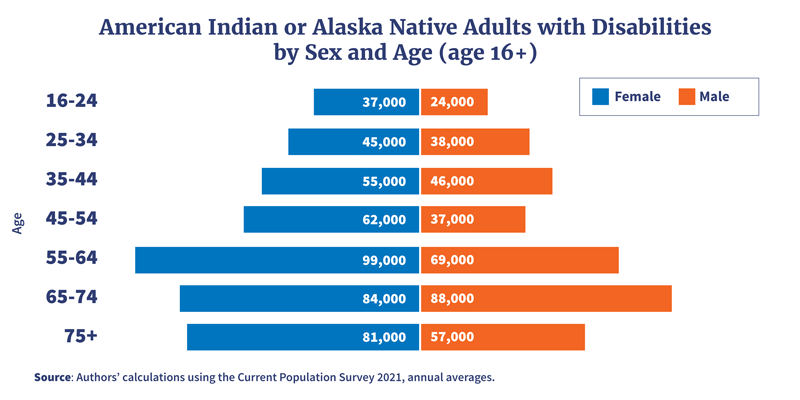 The authors calculated that 166,000 disabled Native workers hold wage and salary jobs in the public, for-profit or non-profit sectors, while 22,000 are self-employed. Native adults with disabilities work in a range of industries, with the largest numbers in education and healthcare. They also hold a variety of occupations, including managerial positions, medical professions, retail, production and teaching.
The authors calculated that 166,000 disabled Native workers hold wage and salary jobs in the public, for-profit or non-profit sectors, while 22,000 are self-employed. Native adults with disabilities work in a range of industries, with the largest numbers in education and healthcare. They also hold a variety of occupations, including managerial positions, medical professions, retail, production and teaching.
The report shows that there are 42,000 Native workers with disabilities working in education and healthcare; 30,000 in professional and business services; 23,000 in leisure and hospitality; 21,000 in trade; 17,000 in manufacturing; 12,000 in construction; 10,000 in transportation and utilities; 10,000 in other services; 9,000 in public administration and 8,000 in finance. An additional 3,000 work in agriculture and 1,000 work in information.
At the National Indian Council on Aging, we help elders find work, develop new skills and talents, and build their financial security by taking advantage of the Senior Community Service Employment Program (SCSEP).
SCSEP is an on-the-job training and employment program designed to help those age 55 and older update their jobs skills, build work experience and confidence, and continue to have economic security and well-being.
Click here to learn more about the program, read SCSEP success stories, or to fill out an application.
